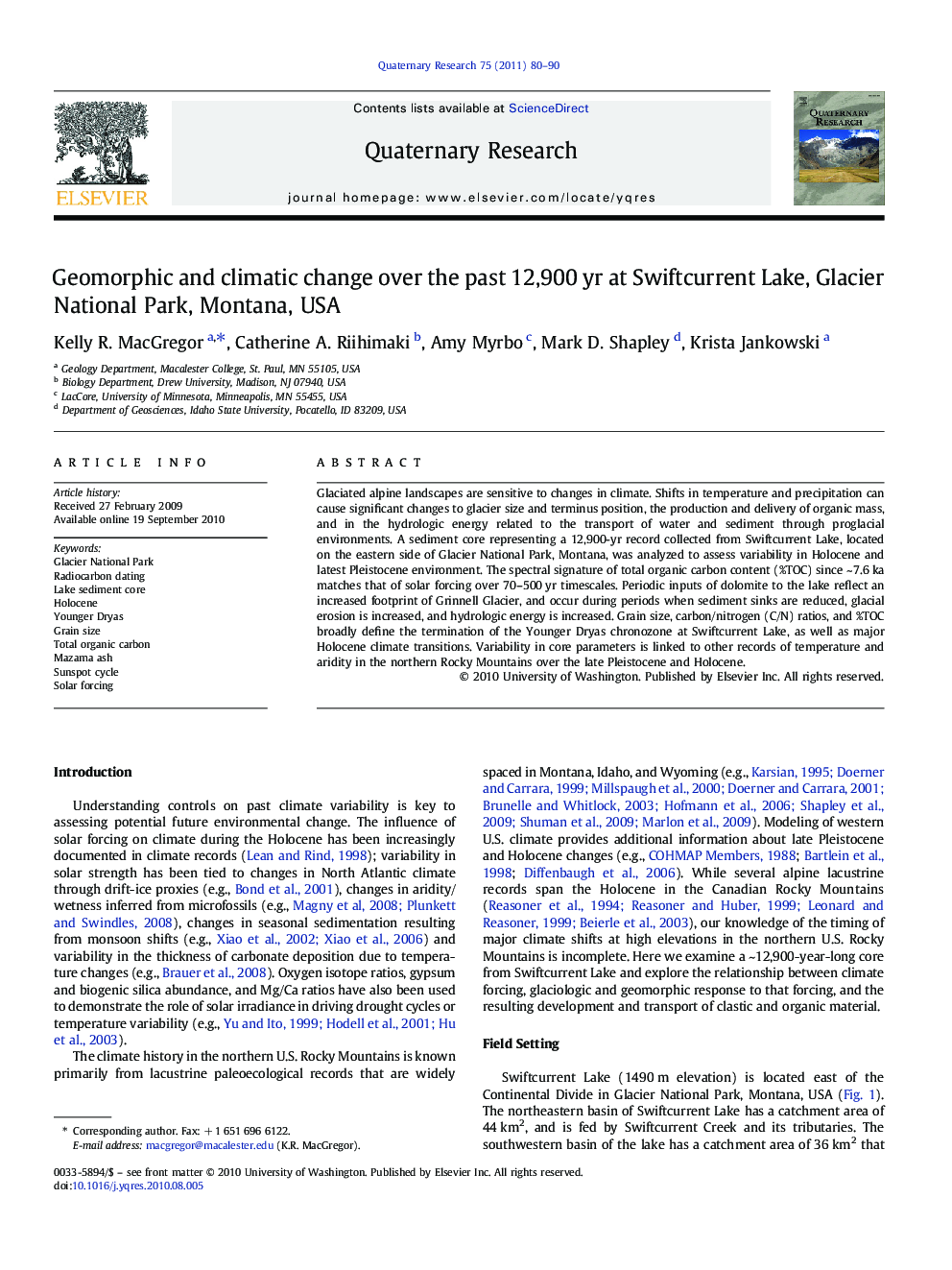| Article ID | Journal | Published Year | Pages | File Type |
|---|---|---|---|---|
| 10501284 | Quaternary Research | 2011 | 11 Pages |
Abstract
Glaciated alpine landscapes are sensitive to changes in climate. Shifts in temperature and precipitation can cause significant changes to glacier size and terminus position, the production and delivery of organic mass, and in the hydrologic energy related to the transport of water and sediment through proglacial environments. A sediment core representing a 12,900-yr record collected from Swiftcurrent Lake, located on the eastern side of Glacier National Park, Montana, was analyzed to assess variability in Holocene and latest Pleistocene environment. The spectral signature of total organic carbon content (%TOC) since ~Â 7.6Â ka matches that of solar forcing over 70-500Â yr timescales. Periodic inputs of dolomite to the lake reflect an increased footprint of Grinnell Glacier, and occur during periods when sediment sinks are reduced, glacial erosion is increased, and hydrologic energy is increased. Grain size, carbon/nitrogen (C/N) ratios, and %TOC broadly define the termination of the Younger Dryas chronozone at Swiftcurrent Lake, as well as major Holocene climate transitions. Variability in core parameters is linked to other records of temperature and aridity in the northern Rocky Mountains over the late Pleistocene and Holocene.
Keywords
Related Topics
Physical Sciences and Engineering
Earth and Planetary Sciences
Geology
Authors
Kelly R. MacGregor, Catherine A. Riihimaki, Amy Myrbo, Mark D. Shapley, Krista Jankowski,
